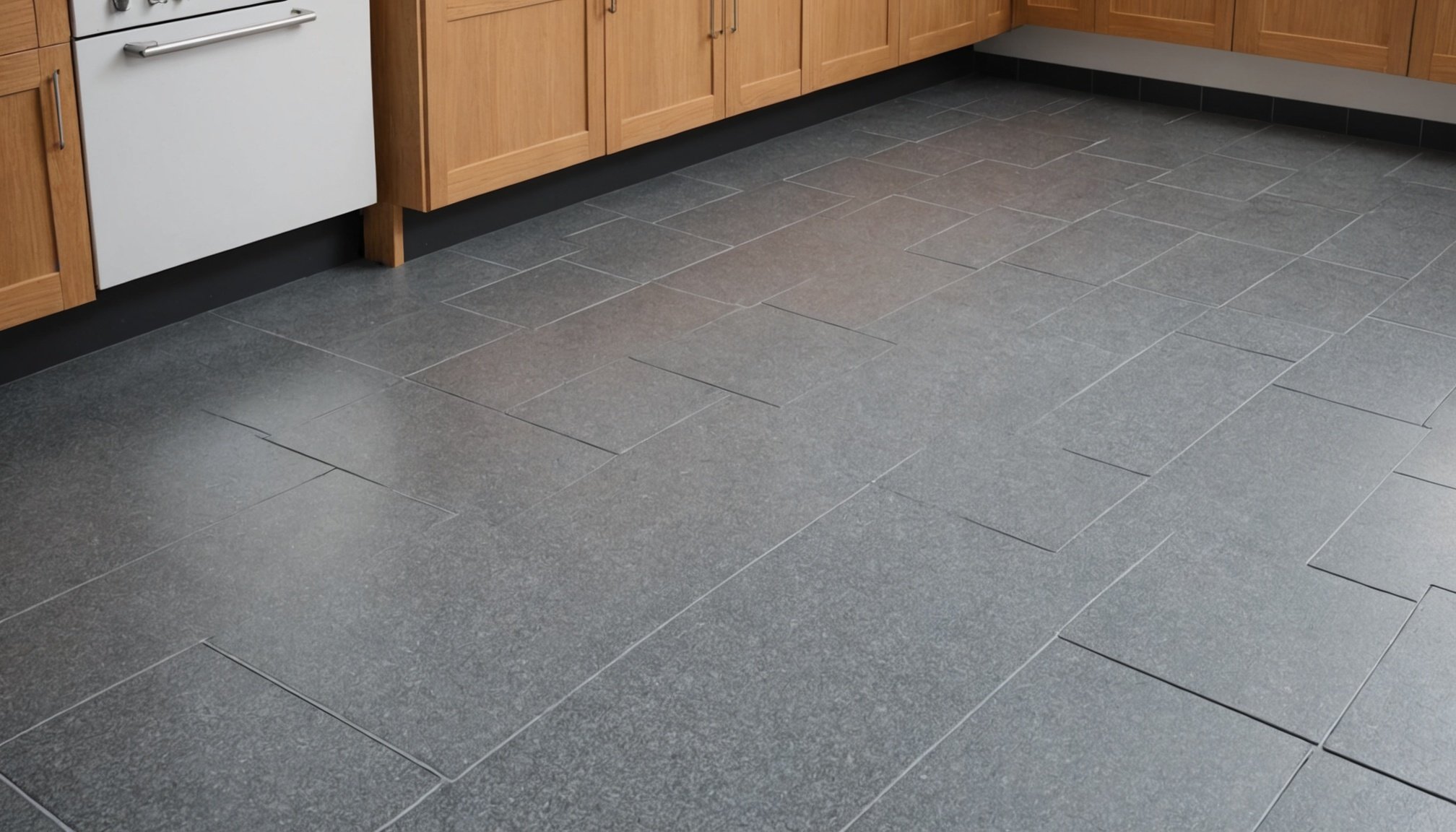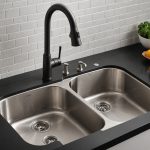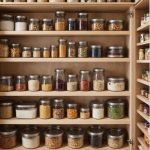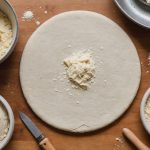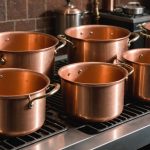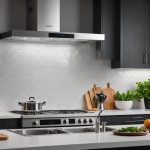Top Thermal Insulation Materials for Kitchen Floors in UK’s Chillier Regions: A Comprehensive Guide
As the UK faces increasingly chilly winters, ensuring your home is well-insulated is more crucial than ever. One often overlooked but critical area for insulation is the kitchen floor. A well-insulated kitchen floor not only makes your home more comfortable but also helps reduce energy bills and create a more energy-efficient home. Here’s a detailed guide to the top thermal insulation materials for kitchen floors, especially in the UK’s chillier regions.
Understanding the Importance of Insulation
Before diving into the materials, it’s essential to understand why insulation is so vital. Insulation helps to retain heat within your home, reducing the need for constant heating and thus saving energy. Here’s what an expert from the field has to say:
Also to read : Embrace minimalism: designing a kitchen that reflects the art of simple living
“Insulation is the backbone of any energy-efficient home. It helps to reduce heat loss, making your home warmer and your appliances more efficient. For instance, a well-insulated kitchen floor can make a significant difference in how your washing machine and other kitchen appliances perform, as they don’t have to work as hard in a warmer environment,” explains Jane Smith, a home energy expert.
Types of Insulation Materials for Kitchen Floors
There are several types of insulation materials that are suitable for kitchen floors, each with its own set of benefits and drawbacks.
Additional reading : Elevate your holiday cooking: essential strategies for designing a streamlined kitchen space
1. Foam Board Insulation
Foam board insulation is one of the most common and effective types of insulation for kitchen floors. It is available in various thicknesses and can be cut to fit around pipes and other obstructions.
-
Benefits:
-
High strength and durability
-
Easy to install
-
Available in different types such as polyisocyanurate (PIR), polyurethane (PUR), and extruded polystyrene foam (XPS)
-
Can be used under screed or cement
-
Drawbacks:
-
Can be more expensive than other types of insulation
-
May not be suitable for very damp environments
2. Reflective Insulation
Reflective insulation, such as aluminum foil-backed insulation, is another option that works well in kitchen floors. It reflects radiant heat rather than absorbing it.
-
Benefits:
-
Easy to install
-
Can be installed over existing insulation
-
Low cost compared to foam board insulation
-
Can help reduce energy bills by reflecting heat back into the home
-
Drawbacks:
-
May not be as effective in very cold climates
-
Requires careful installation to ensure it is properly sealed
3. Fiberglass Batt Insulation
Fiberglass batt insulation is a traditional choice but can be more challenging to install in kitchen floors due to the need for precise fitting around pipes and other obstacles.
-
Benefits:
-
Cost-effective
-
Widely available
-
Can be used in various parts of the home
-
Drawbacks:
-
More difficult to install in kitchen floors
-
May lose effectiveness if not properly fitted
-
Can be irritating to skin and respiratory system during installation
Detailed Comparison of Insulation Materials
Here is a comprehensive table comparing the different types of insulation materials for kitchen floors:
| Material | Thickness | R-Value | Cost per m² | Ease of Installation | Moisture Resistance | Environmental Impact |
|---|---|---|---|---|---|---|
| Foam Board | 20-100 mm | R-3 to R-8 | £20-£50 | Easy to moderate | High | Moderate |
| Reflective | 5-10 mm | R-1 to R-3 | £10-£20 | Easy | Low | Low |
| Fiberglass | 50-150 mm | R-2 to R-4 | £15-£30 | Moderate to difficult | Low | Moderate |
Practical Considerations and Expert Advice
When choosing and installing insulation for your kitchen floor, there are several practical considerations to keep in mind.
Assessing Your Home’s Needs
Before selecting an insulation material, assess your home’s specific needs. For example, if you live in a very damp area, you may need insulation with high moisture resistance.
Professional Installation
While some insulation materials are easy to install, it is often recommended to hire a professional to ensure the job is done correctly. Here’s what a professional installer advises:
“Proper installation is key to the effectiveness of any insulation material. A professional can ensure that the insulation is fitted correctly around all obstacles and that there are no gaps or voids that could reduce its efficiency,” says Mark Davis, a home insulation expert.
Combining Insulation with Other Energy-Efficient Measures
Insulation is just one part of creating an energy-efficient home. Combining it with other measures such as efficient windows, smart home appliances, and a well-maintained heating system can significantly reduce your energy bills.
Cost Calculator and Budgeting
The cost of insulation can vary widely depending on the material chosen and the size of your kitchen floor. Here is a rough estimate of the costs involved:
- Foam Board Insulation: £20-£50 per m²
- Reflective Insulation: £10-£20 per m²
- Fiberglass Batt Insulation: £15-£30 per m²
To give you a better idea, here is an example of how to calculate the cost for a typical kitchen floor:
Kitchen Floor Area: 20 m²
Material Cost: £30 per m² (Foam Board Insulation)
Total Cost: 20 m² * £30/m² = £600
Ways to Reduce Energy Bills Through Insulation
Insulation is one of the most effective ways to reduce energy bills and make your home more energy-efficient. Here are some ways insulation can help:
- Retain Heat: Insulation helps to retain heat within your home, reducing the need for constant heating.
- Reduce Heat Loss: By reducing heat loss through the floor, you can keep your home warmer without increasing your heating costs.
- Improve Appliance Efficiency: A warmer kitchen environment can make your appliances, such as your washing machine and refrigerator, more efficient.
- Create a Smart Home: Combining insulation with smart home technologies can help you monitor and manage your energy usage more effectively.
Insulating your kitchen floor is a smart and cost-effective way to make your home more energy-efficient and comfortable. By choosing the right insulation material and ensuring proper installation, you can significantly reduce your energy bills and contribute to a more sustainable future.
Here’s a final piece of advice from an expert:
“Insulation is not just about saving money; it’s about creating a comfortable and sustainable home. With the right materials and installation, you can enjoy a warmer, more energy-efficient home while also doing your part for the environment,” concludes Jane Smith.
By following this comprehensive guide, you’ll be well on your way to selecting and installing the best thermal insulation for your kitchen floor, ensuring a cozy, energy-efficient home for years to come.
Overview of Thermal Insulation
Thermal insulation serves as a barrier that reduces the rate of heat transfer between the interior and the exterior of a building. Its primary purpose is to maintain a building’s internal climate, keeping it warm in winter and cool in summer. This becomes particularly crucial in colder regions like those found in the UK, where maintaining indoor warmth can significantly impact energy bills.
Insulating your kitchen floor can have a notable effect on your home’s overall energy efficiency. Without proper kitchen floor insulation, cold air can seep in from below, leading to higher heating requirements and increased energy consumption. Kitchen floor insulation helps minimise heat loss, maintaining a comfortable environment while supporting sustainability by reducing the demand for heating.
Various thermal insulation materials like foam boards, reflective barriers, and spray foam cater to different needs. For regions in the UK that experience harsh winters, selecting the right insulation material is integral to achieving effective results. A well-insulated home not only improves comfort but also provides energy savings. By understanding the importance of insulation and selecting materials tailored to specific climates, households can optimise their thermal performance without sacrificing comfort.
Common Thermal Insulation Materials
When considering thermal insulation, understanding the different types and their performance is crucial for selecting the best material.
Rigid Foam Board Insulation
Rigid foam board is renowned for its exceptional thermal performance. It offers excellent energy efficiency due to its high R-value, which measures its insulation effectiveness. Ideal for kitchen floors in colder climates, it helps maintain warmth. Additionally, its resistance to moisture makes it a durable choice in areas prone to dampness.
Mineral Wool Insulation
Mineral wool is favoured for its fire-resistant properties and excellent soundproofing capabilities. Its density helps reduce heat transfer, ensuring efficient thermal insulation. It is also non-combustible, enhancing safety. For installation, prepare and measure spaces accurately to prevent gaps, ensuring maximum coverage.
Spray Foam Insulation
Spray foam is effective in sealing kitchen floors due to its ability to reduce air leaks, thus improving energy efficiency. Its adherence to surfaces ensures detailed coverage, providing a robust insulative barrier. However, consider its cost and the need for professional installation, as improper application can lead to issues such as moisture entrapment.
Choosing the Right Insulation for Kitchen Floors
Selecting the appropriate insulation for kitchen floors involves several performance factors. Key considerations include the material’s durability, thermal resistance, and moisture management capabilities. For regions with cold climates, materials that provide high thermal resistance are essential to maintain warmth and energy efficiency.
The impact of regional climate on insulation performance cannot be overstated. In colder areas, insulation that effectively prevents heat loss is crucial. For warmer climates, focus on materials that offer excellent heat reflection to keep interiors comfortable.
Beyond climate, the type of property and kitchen design influences insulation choice. For example, an open floor plan may require insulation with superior soundproofing capabilities, reducing noise transmission between rooms. On the other hand, for traditional homes, materials that match the architectural style and provide long-term durability should be prioritized.
Recommendations vary, but for those in colder areas, consider fibreglass or rigid foam insulation for their renowned thermal efficiency. In warmer climates, reflective foil or spray foam insulation can effectively manage heat. Always ensure the chosen material aligns with both energy requirements and aesthetic considerations to optimize the kitchen environment.
Installation Techniques and Tips
Installing insulation in your home, whether through DIY guidance or a professional installation, can greatly impact your energy efficiency and comfort. Choosing the best method is essential for achieving optimal results.
DIY Installation Tips
Homeowners keen on tackling insulation can follow a solid step-by-step approach. Begin by assembling necessary tools such as a utility knife, measuring tape, and protective gear. Essential materials include insulation rolls, a staple gun, and adhesive. When installing, measure twice to ensure precise cuts and fit configurations. Aim to avoid common pitfalls such as leaving gaps, compressing the material, or failing to seal air leaks. Thorough preparation and attention can lead to a successful DIY project.
Hiring Professional Services
In scenarios where tasks seem daunting or require expertise, hiring professional services should be considered. Professional installation guarantees a thorough job, often with insulation installation warranties, ensuring long-term satisfaction. While the initial cost may be higher, the value derived from an expertly executed job often outweighs the expense over time. When selecting a service, research their reputation carefully, check reviews, and request quotes to compare cost implications and service quality. Reputable installers ensure peace of mind through their expert execution and experience.
Cost Comparison of Insulation Options
When considering insulation costs, it’s crucial to weigh both immediate expenses and potential long-term savings. Different insulation materials come with varied price tags. For example, fibreglass and mineral wool are typically among the more affordable choices, costing around £1 to £2 per square foot. On the other hand, spray foam insulation can be more expensive, ranging from £3 to £7 per square foot, but it offers greater energy efficiency.
Budget considerations involve understanding these upfront costs against potential savings on energy bills. Insulation not only retains the warmth but also reduces energy consumption, resulting in lower heating costs. Although spray foam insulation may seem costly initially, its superior performance can lead to significant savings over time, generally paying for itself within a few years.
For those with limited budget considerations, opting for fibreglass or mineral wool can be an effective choice for kitchen floor insulation. While offering moderate efficiency, these options provide a balance between upfront costs and energy bill reductions.
Ultimately, choosing the right insulation requires a thoughtful analysis of long-term savings. By factoring in climate, energy prices, and budget constraints, one can make an informed decision tailored to their specific needs and financial situation.
User Reviews and Ratings of Insulation Products
To navigate the world of insulation materials, consumer reviews play a pivotal role. These reviews shed light on the product performance and authenticity of user experiences.
Top Rated Products
Among insulation materials for kitchen floors, some products consistently receive high ratings. Users frequently praise their durability and effectiveness in maintaining temperature. Reports highlight materials that ensure minimal heat loss, contributing to energy efficiency. Feedback often emphasises the ease of installation, given the need for products that arm homeowners with practical solutions. Here’s where ratings become insightful: they differentiate reliable options from their counterparts, instilling confidence in customer choices and satisfaction.
Common Complaints and Issues
However, it’s not uncommon to encounter issues. Consumers often express concerns about performance in colder climates, indicating inconsistent product performance. Some report materials inadequately resist colder temperatures, leading to dissatisfaction. Repeated feedback on difficulties with installation illustrates another area needing attention. Based on user experiences, selecting the right insulation demands consideration of climate suitability and installation feasibility. Understanding these factors can effectively guide decisions to ensure product effectiveness and reliability.
Overview of Thermal Insulation Materials
Thermal insulation materials play a crucial role in keeping spaces comfortable, especially during the harsh UK winters. They are designed to reduce heat loss and maintain the desired temperature within a space. To achieve this, materials such as fibreglass, foam board, and polystyrene are commonly used.
Kitchen floors are one area where these materials are particularly beneficial. Since kitchen floors can become quite cold, especially in the winter months, adding insulation helps in creating a more comfortable cooking environment.
In addition to comfort, thermal insulation significantly enhances energy efficiency. Effective insulation ensures less reliance on heating systems, which consequently leads to reduced energy consumption and lower utility bills. This is particularly beneficial in colder regions where maintaining warmth is essential for both homes and commercial spaces.
By understanding the composition and advantages of various thermal insulation materials, individuals can make informed decisions that not only improve their living conditions but also contribute positively to energy conservation. Choosing the right type of insulation can transform a space, making it both cosy and economically viable year-round.
Types of Thermal Insulation Materials
Understanding different types of insulation is essential for making informed decisions on the best materials for kitchen floors. Each type offers unique characteristics and benefits.
Rigid Foam Insulation
Rigid foam insulation is known for its excellent energy-saving properties. It is a popular choice due to its high R-value per inch, which measures the material’s ability to resist heat flow. Its dense structure also offers significant moisture resistance, making it suitable for kitchens where humidity is a consideration. Rigid foam boards can be easily cut to fit specific spaces, providing a versatile option for both walls and floors.
Mineral Wool Insulation
Mineral wool insulation, also referred to as rock wool, is celebrated for its fire-resistant properties. It is an eco-friendly option, composed of natural or recycled materials. While its R-value may be slightly lower than that of rigid foam, it excels in noise reduction and thermal stability. Mineral wool is particularly effective in areas where acoustics are important, helping to keep unnecessary noise to a minimum.
Polystyrene Insulation
Polystyrene insulation is available in two main forms: expanded (EPS) and extruded (XPS). Both provide robust thermal performance, though XPS offers superior moisture resistance and durability. This makes XPS an ideal candidate for kitchen floor insulation. Comparatively, polystyrene is effective in energy savings and offers straightforward installation, providing a practical solution for both new builds and retrofitting existing homes.
Benefits of Thermal Insulation in Kitchens
Investing in insulation for your kitchen can significantly enhance energy efficiency. By creating thermal barriers, it helps to reduce the amount of heat lost through walls and ceilings, which in turn lowers energy consumption. This directly leads to energy savings, allowing homeowners to enjoy reduced utility bills over time.
Moreover, effective insulation minimizes heat loss, which is often a primary contributor to high heating costs during the colder months. With reduced heat escapage, your heating systems work less, further cutting down costs and contributing to a more sustainable household.
Another remarkable advantage of kitchen insulation is the noticeable comfort improvements it provides. During colder months, kitchens can become chilly, making them less welcoming. However, proper insulation ensures that the warmth is retained, optimizing indoor comfort levels. This creates an inviting and cozy environment, encouraging more family and social activities around the kitchen.
In summary, the benefits of insulation in kitchens span from decreased energy expenditure to enhanced comfort, making it a prudent and practical investment for any modern home looking to boost efficiency and comfort simultaneously.
Installation Methods
Installing thermal insulation can be approached in two main ways: DIY installation options or hiring professional services. Each method has its own set of advantages and challenges that are important to consider.
For a DIY approach, ensure you have a solid understanding of the thermal insulation process. Begin by measuring your kitchen floor to determine the amount of material needed. Prepare the area by cleaning and repairing any existing damage. Then, place the insulation material snugly between the floor joists, taking care to minimize gaps. Finish by adding a vapour barrier to protect against moisture.
Professional installation services offer expertise and efficiency. They are equipped with the knowledge to handle potential challenges such as uneven floors or hard-to-reach places. Professionals can also ensure that the installation of insulation adheres to local building regulations.
Common challenges during both DIY and professional installations include managing proper airflow to prevent condensation and securing materials without causing damage to the existing floor. A practical solution is to use breathable membranes that allow moisture to escape.
Whether you choose a DIY route or professional assistance, investing in quality materials and following the right steps can significantly improve your home’s energy efficiency.
Cost Considerations
Understanding the financial aspects of kitchen renovations, particularly the cost of insulation materials, is crucial to making informed decisions. It’s essential to carefully consider both up-front expenses and potential long-term savings.
Initial Investment
When budgeting for kitchen renovations, the initial investment in insulation materials can vary widely. Factors such as the type of insulation, the size of the kitchen, and installation costs all play a role in determining the total cost of insulation materials. High-quality insulation often demands a higher initial expense but promises greater energy efficiency.
Long-Term Savings
Investing in effective insulation holds the promise of significant savings over time. The expected return on investment (ROI) on insulation can be substantial, as it reduces energy consumption and utility bills. It’s essential to estimate energy savings to understand the full value proposition. Proper insulation not only contributes to lower heating and cooling costs but also enhances comfort all year.
Available Incentives and Grants
Financial support options can significantly ease the cost burden. Many regions offer incentives or grants for insulation installations, making such upgrades more affordable. Exploring available financial assistance can help allocate funds more judiciously, allowing for a well-planned renovation budget with optimal ROI on insulation.
Regulatory Standards and Guidelines
Understanding the insulation standards in the UK is crucial for both homeowners and builders. These standards ensure energy efficiency and safety in all residential and commercial properties. In the UK, building regulations require that all new buildings and significant renovations adhere to specific guidelines that dictate the level of insulation necessary to reduce heat loss and enhance energy efficiency.
These UK guidelines are part of a broader commitment to reducing carbon emissions and supporting sustainable construction practices. Compliance is not just beneficial for the environment; it ensures lower energy bills and improved occupant comfort. The importance of adhering to these building regulations cannot be overstated, as they help maintain structural integrity and prevent potential hazards associated with poor insulation.
Failure to comply with these regulations can lead to significant consequences. Homeowners might face legal penalties, including fines or enforced modifications. Additionally, non-compliance may result in lower property values and increased energy costs due to inefficient thermal performance. Therefore, understanding and implementing these insulation standards is essential for effective and responsible building practices.
Maintenance and Energy Efficiency Tips
Ensuring your home is both energy-efficient and well-maintained involves strategic actions, particularly focusing on insulation maintenance. Efficient insulation minimises energy waste and keeps your space comfortable.
Regular Inspection Techniques
Regular inspections are crucial for maintaining energy efficiency. Examine your insulation for gaps, moisture, and wear. Check for drafts as a sign of insulation issues. A thermal imaging camera can identify hidden leaks and inefficiencies more effectively. Such devices are now accessible and help you detect areas that need immediate attention.
Upgrading Insulation Over Time
Insulation quality can degrade, reducing energy efficiency. Modern materials often provide better performance compared to older ones. Consider upgrading as technology progresses. Opt for high R-value insulation, which measures thermal resistance, ensuring your home retains heat or cool air as needed. This upgrade can significantly lower energy costs over time.
Complementary Energy-Saving Measures
In addition to maintaining insulation, a few simple kitchen tips can contribute to energy savings. Use energy-efficient appliances, and consider integrating LED lighting, which uses less power and lasts longer. Pay attention to sealing windows and doors, reducing the strain on heating and cooling systems. These measures not only preserve energy but also decrease utility bills, optimising your home’s overall efficiency.

